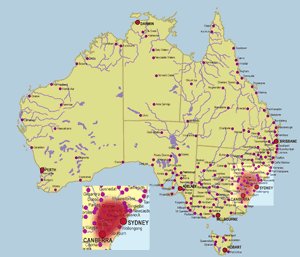Family Hexathelidae Order Spider | Rank Species | |
 | ||
Similar Hadronyche, Hadronyche formidabilis, Hadronyche infensa, Hadronyche versuta, Hadronyche modesta | ||
Hadronyche cerberea, the southern tree funnel-web spider, is a venomous mygalomorph spider found in central New South Wales, Australia.
Contents
Taxonomy and naming
German naturalist Ludwig Koch described the southern tree funnel-web from a female spider collected in Sydney, and erected the genus Hadronyche in 1873. The type specimen was housed at the State Museum of Natural History Stuttgart and destroyed during bombing in World War II. A neotype was subsequently selected in 2010 and is housed at the Australian Museum in Sydney.
Description
The southern tree funnel-web has a glossy black carapace, and matte black or dark brown chelicerae and legs, and light maroon-brown to dark brown abdomen.
Distribution and habitat
The southern tree funnelweb is found in eastern Australia from the Hunter River in central New South Wales to southern New South Wales. This and the northern tree funnel-web (Hadronyche formidabilis) are the only two species of funnel-web that live predominantly in trees.
It inhabits dry sclerophyll forest.
In Tallaganda National Park and its surrounds in southeastern New South Wales, the southern tree funnel-web co-occurs with the funnel-web species Atrax sutherlandi, which burrows exclusively in the soil, in contrast with the former species' preference for logs. Genetic analysis shows that the southern tree funnel-web has recently rapidly spread through the area.
Toxicity
A high proportion of bites from the southern tree funnel-web spider—three out of four recorded cases—result in severe symptoms of envenomation. The venom can be successfully treated with the antivenom for the related Sydney funnel-web (Atrax robustus).
Symptoms of envenomation can occur within 15–20 minutes. Applying pressure and a tourniquet can significantly delay the onset of symptoms and remains a critical part of management of a spider bite. Despite the venom lacking the atraxotoxin or atraxin of A. robustus, the symptoms are very similar to those from a Sydney funnel-web bite. Common symptoms include diaphoresis (profuse sweating), hypertension (elevated blood pressure), sinus tachycardia (elevated heart rate), nausea, vomiting and local pain at the bite site. Pulmonary oedema (fluid build-up in the lungs) often comes on early.
